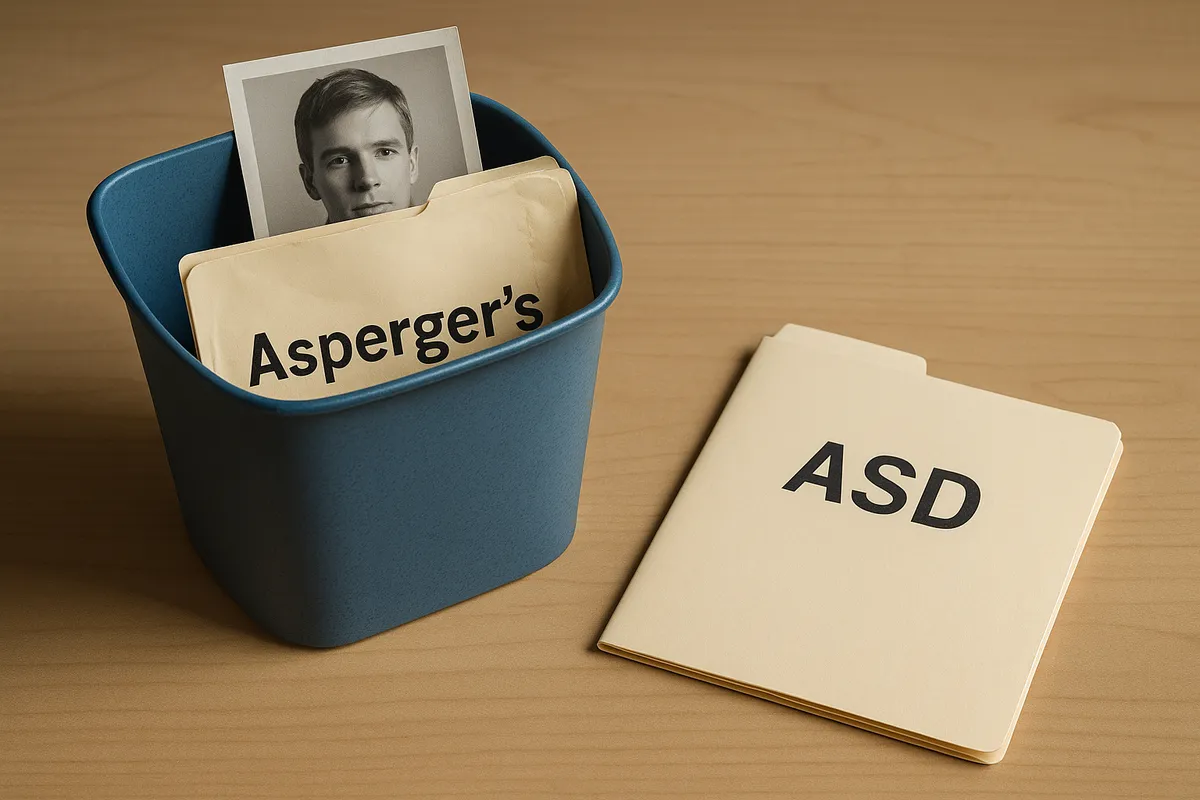What Was Lost When Asperger’s Was Absorbed
 For years, "Asperger’s syndrome" was held up as the autism that could pass — high-functioning, quirky, even marketable. It offered legitimacy to some, erasure to others and created a fault line through the autistic community. That fault line didn’t disappear when the DSM-5 and ICD-11 collapsed Asperger’s into Autism Spectrum Disorder. It just moved underground.
For years, "Asperger’s syndrome" was held up as the autism that could pass — high-functioning, quirky, even marketable. It offered legitimacy to some, erasure to others and created a fault line through the autistic community. That fault line didn’t disappear when the DSM-5 and ICD-11 collapsed Asperger’s into Autism Spectrum Disorder. It just moved underground.
A new review from Gacka et al., published in Journal of Education, Health and Sport, examines the aftermath of that diagnostic collapse. It’s a clear-eyed accounting of what the label did, what its erasure means and how systems continue to misrecognize autistic people who don’t conform to expected profiles.
Among the findings:
Up to 15% of those formerly diagnosed with Asperger’s no longer meet ASD criteria under ICD-11. These are not "recovered" individuals. They’re misclassified, unsupported and rendered invisible.
Women and late-diagnosed adults are especially at risk. Camouflaging behavior often leads clinicians to assign misdiagnoses like borderline personality disorder, bypassing autism entirely.
The legacy of social stratification within the spectrum endures. The old dichotomy of "Aspie" vs. "classic autism" may be gone from the manuals, but it lingers in access decisions, self-concept and public attitudes.
The authors are careful not to romanticize the past. They address Hans Asperger’s Nazi affiliations head-on. They critique the pathologizing impulse that has always surrounded both the Asperger’s and broader ASD labels. And they resist calls to revive a discredited diagnostic category.
But they also warn: diagnostic precision should not come at the cost of support. And erasing subgroups without offering replacement frameworks doesn’t simplify care. It narrows it.
This paper doesn’t center autistic voices as fully as we might hope — but it listens, it questions and it never pretends classification is neutral. It names the consequences of bureaucratic decisions that affect real people’s lives.
And it leaves us with a challenge: not to cling to outdated labels, but to ensure that whatever replaces them actually recognizes the full autistic spectrum — not just the parts that match a clinician’s checklist.
Read the full study: